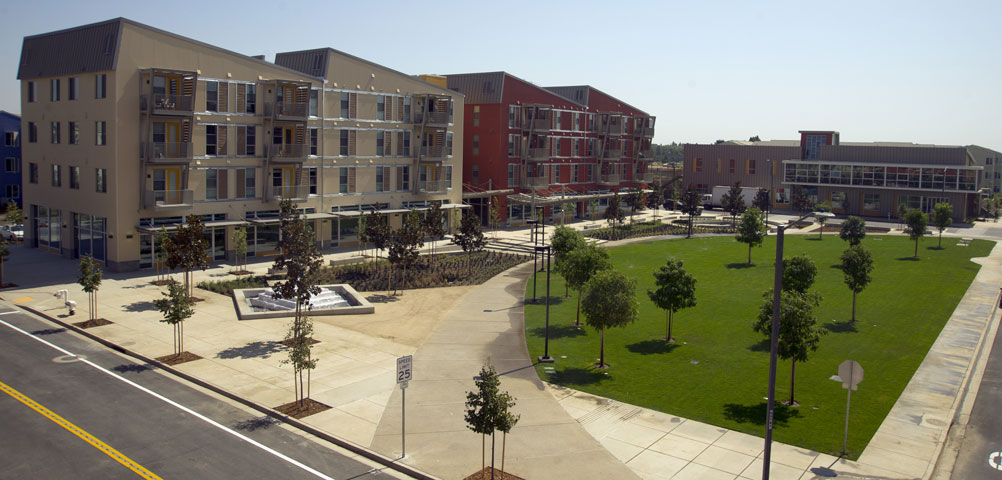
The UC Davis West Village was designed to achieve zero-net energy (meaning the facility will generate as much energy as it consumes). CWEE was asked to prepare an in-depth analysis of what it would take for the West Village to achieve zero-net water use—where total water consumption does not exceed the annual rainfall that lands on the site. CWEE researchers, factoring in the energy demands associated with water, revealed that that many enhancements to the project’s water efficiency could pay for themselves in less than five years’ time. [Download the study brief ]
UC Davis West Village was designed to use aggressive energy conservation and onsite generation to achieve zero-net energy (meaning the facility will generate as much energy as it consumes). With this in mind, developers asked the CWEE to prepare an in-depth analysis of what it would take for the West Village to achieve zero-net water use—where total water consumption does not exceed the annual rainfall that lands on the site. CWEE researcher Kendra Olmos, working with director Frank Loge, provided a study of the site that identified numerous methods of saving water, including graywater recycling, rainwater impoundment, and low-water appliances and landscaping.
The CWEE study indicated that the UC Davis West Village community could achieve overall zero-net water use by installing high-efficiency indoor appliances, drought-tolerant landscaping, and high-efficiency irrigation. Implementing graywater recycling would enable it to surpass the zero-net water benchmark.
Factoring in the energy demands associated with water revealed that that many of the recommended enhancements to the project’s water efficiency could indeed pay for themselves in less than five years’ time.
Taken alone, water costs could not justify the added financial expense of conservation measures. “Payback period,” the amount of time conservation measures required to recoup their costs, would for some measures have exceeded 20 years. Factoring in the energy demands associated with water revealed that that many of the recommended enhancements to the project’s water efficiency could indeed pay for themselves in less than five years’ time.
These findings are in keeping with the CWEE’s guiding philosophy: that an integrated approach to water and energy resource planning leads to expanded opportunities for efficiency. In fact, water and energy efficiency are inseparable. For this study, the CWEE estimated that slightly less than 5 watt-hours of power are needed for every gallon of water consumed at this site. With the zero-net goal of 102 million gallons of annual rainwater targeted by the study, it is no surprise that the energy saved through water conservation would add up fast, dramatically lowering the payback period for water conservation measures.
The CWEE study also took into account the benefits of reduced greenhouse gas emissions from water conservation in addition to the net energy and financial savings. In total, cost savings from conservation improvements included water cost savings (the amount of water saved and the related amount of wastewater prevented), water-energy cost savings (energy reduced in treating and transporting water and wastewater), water-heating energy cost savings, and greenhouse gas emission cost savings (emission reductions resulting in energy and hot water savings).
This study also considered, but recommended against, impounding and storing the rainwater that falls on the site. These measures would be necessary to achieve net-zero water for the multifamily units independently, but proved prohibitively expensive for deployment in the West Village development. However, the cost-effective water conservation and energy accounting strategies described above were shown to be powerful enough not only to balance the water use of single family dwellings independently, but also to zero-out net water use for the West Village community as a whole.
West Village may be a small community, but it is a small community that is proving big ideas for a sustainable water-energy future.
Download the study brief.

